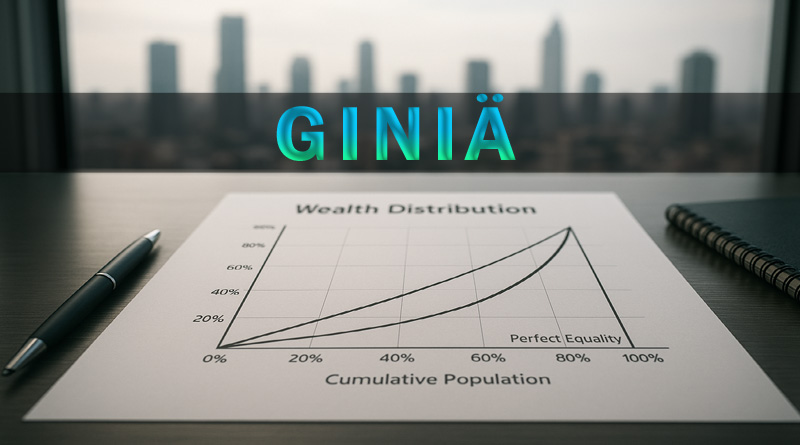Table of Contents
Introduction to Distribution Analysis
Distribution analysis helps identify how resources, income, or other measurable quantities are spread across a population. Understanding distribution is key to identifying gaps, inequalities, and areas that require attention. Tools like giniä provide a quantitative approach to capture these differences.
Defining Giniä
Giniä is a metric that captures the degree of inequality or variation within a dataset. It is particularly useful when comparing different populations or assessing disparities in income, wealth, or resource allocation. Unlike simple averages, giniä provides a nuanced perspective, highlighting areas of concentration and scarcity.
Historical Context and Development
The concept of giniä builds on classical statistical measures but emphasizes proportional differences. Its development was motivated by the need to quantify inequality more effectively than traditional methods allowed. Over time, it has become a standard tool in economics, social science, and analytics.
Key Characteristics of Giniä
Several features make giniä valuable:
- It highlights disparities rather than just averages.
- It allows comparison across populations or datasets.
- It is scalable, suitable for small or large datasets.
- Its results can be visualized for easier interpretation.
Measuring Inequality Using Giniä
The calculation of giniä involves assessing the proportion of total values each member of a dataset contributes. Steps typically include data collection, ordering, proportional analysis, and interpretation. Visual tools like curves or graphs often accompany the numerical results to make insights more tangible.
Applications in Economics
Economists frequently use giniä to measure income or wealth inequality across regions or populations. By understanding which areas have higher disparities, policymakers can implement targeted interventions. It also helps in evaluating the effectiveness of economic programs over time.
Business and Market Insights
For businesses, analyzing customer distribution or sales patterns using giniä can guide marketing strategies and resource allocation. It helps identify high-value segments, understand market concentration, and plan more effective campaigns without assuming uniform behavior across customers.
Social Research and Community Analysis
Researchers use giniä to evaluate inequalities in education, healthcare, or access to resources. By quantifying these disparities, organizations can identify priority areas and design targeted solutions. Giniä provides a clear, numerical foundation for policy recommendations and social interventions.
Environmental and Resource Studies
In environmental studies, giniä can measure the uneven distribution of resources, pollution, or biodiversity across different areas. These insights help in planning sustainable development initiatives, allocating conservation efforts, and monitoring environmental equity.
Practical Benefits of Understanding Distribution
Using tools like giniä offers several advantages:
- Better decision-making by highlighting gaps and disparities.
- Strategic planning informed by data patterns.
- Enhanced reporting for research and business insights.
- Tracking progress over time through measurable metrics.
Common Misunderstandings
Despite its usefulness, giniä is sometimes misinterpreted. Not all high variation is negative; in some contexts, diversity is beneficial. Additionally, giniä applies beyond income and wealth, extending to any measurable resource or dataset.
Tips for Effective Use
To leverage giniä effectively:
- Ensure accurate and relevant data collection.
- Use visualizations to enhance interpretation.
- Compare datasets or time periods for meaningful insights.
- Integrate findings into broader strategic frameworks.
Case Studies and Examples
Consider a retail business analyzing customer spending. Using giniä, the company can see which customer segments contribute disproportionately to revenue and focus marketing resources accordingly. In social research, a study may use giniä to evaluate educational access across districts, identifying underserved communities and guiding intervention programs.
Future Applications
As data continues to grow in volume and importance, giniä’s role will expand. It can inform AI-driven decision-making, predictive analytics, and real-time monitoring of disparities. Its versatility ensures that organizations and researchers can adapt it to new challenges and opportunities.
Conclusion
Understanding giniä is more than an academic exercise—it is a practical tool for identifying patterns, disparities, and areas of improvement. Whether applied in economics, business, social research, or environmental studies, giniä provides actionable insights that inform decisions and strategies. By using giniä wisely and interpreting its results in context, professionals can drive equitable and effective outcomes.
Frequently Asked Questions About Giniä
What is giniä?
Giniä is a measure used to understand distribution, variability, or inequality within a dataset or population. It provides valuable insights for economic, social, and business analyses.
How is giniä calculated?
Giniä is calculated by analyzing how values are distributed across a dataset. Tools like Lorenz curves and proportional analysis are often used to measure giniä effectively.
Why is giniä important?
Giniä is important because it highlights disparities that averages alone cannot show, helping researchers, businesses, and policymakers make informed decisions.
Can giniä be applied in business analysis?
Yes. Giniä can reveal patterns in customer behavior, sales distribution, and market segmentation, allowing businesses to optimize strategies and allocate resources efficiently.
Is giniä relevant in economic studies?
Absolutely. Economists use giniä to assess income inequality, wealth distribution, and regional disparities, making it a crucial tool for policy evaluation.
How does giniä assist in social research?
Researchers use giniä to quantify disparities in areas like education, healthcare, or access to resources. It helps identify underserved populations and guide targeted interventions.
What software can be used to analyze giniä?
Various statistical and data analysis tools, including Excel, R, and Python, can calculate giniä and visualize it for better interpretation.
Is giniä applicable to small datasets?
Yes. Giniä is scalable and can be applied to both small and large datasets, making it flexible for different analytical purposes.
What are common misconceptions about giniä?
Some believe giniä only applies to income or wealth, but it can measure any kind of distribution. Also, higher giniä does not always indicate a negative situation—it depends on context.
How can giniä be used effectively?
To use giniä effectively, ensure accurate data collection, complement calculations with visualizations, compare datasets or time periods, and integrate findings into broader strategies.


